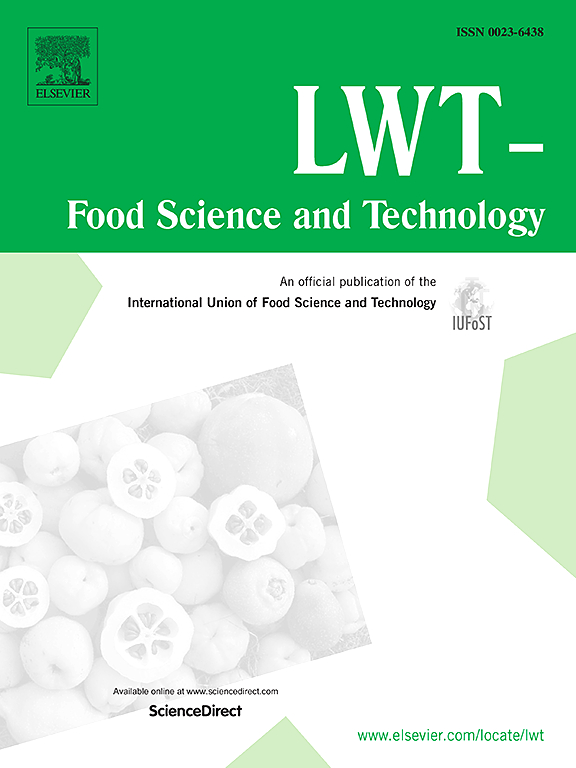Monitoring salting kinetics of pork loin using magnetic resonance imaging (MRI) and time-domain nuclear magnetic resonance (TD-NMR)
IF 6
1区 农林科学
Q1 FOOD SCIENCE & TECHNOLOGY
引用次数: 0
Abstract
Magnetic resonance imaging (MRI) and time-domain nuclear magnetic resonance (TD-NMR) have been used as tools to monitor the salting process in pork loin. For this purpose, the longitudinal (T1) and transverse (T2) relaxation times, as well as the apparent diffusion coefficient (ADC), have been employed. To observe the changes occurring in meat pieces during the salting process and to obtain prediction models of the salt (NaCl) and water contents, the potential of each of these parameters has been evaluated. Surface models have been obtained that allow the observation of variations in T1, T2, and ADC MRI values related to salt diffusion and water loss during the salting process. Additionally, simple regression models have been established to determine the NaCl and water contents at any time during the process based on T1 and T2 values MRI values. On the other hand, to determine the NaCl content of the meat from the TD-NMR study, similar regression models were obtained with the mono-exponential analysis of T1 and T2 values. Additionally, the multi-exponential analysis of both T1 and T2 has provided insight into the effect of salt intake on the proton populations inside the meat. Thus, it is concluded that MRI and TD-NMR are highly suitable non-destructive techniques for the salt content determination and the monitoring of the salting process in the meat industry.

求助全文
约1分钟内获得全文
求助全文
来源期刊

LWT - Food Science and Technology
工程技术-食品科技
CiteScore
11.80
自引率
6.70%
发文量
1724
审稿时长
65 days
期刊介绍:
LWT - Food Science and Technology is an international journal that publishes innovative papers in the fields of food chemistry, biochemistry, microbiology, technology and nutrition. The work described should be innovative either in the approach or in the methods used. The significance of the results either for the science community or for the food industry must also be specified. Contributions written in English are welcomed in the form of review articles, short reviews, research papers, and research notes. Papers featuring animal trials and cell cultures are outside the scope of the journal and will not be considered for publication.
 求助内容:
求助内容: 应助结果提醒方式:
应助结果提醒方式:


